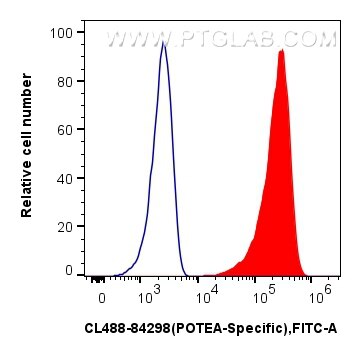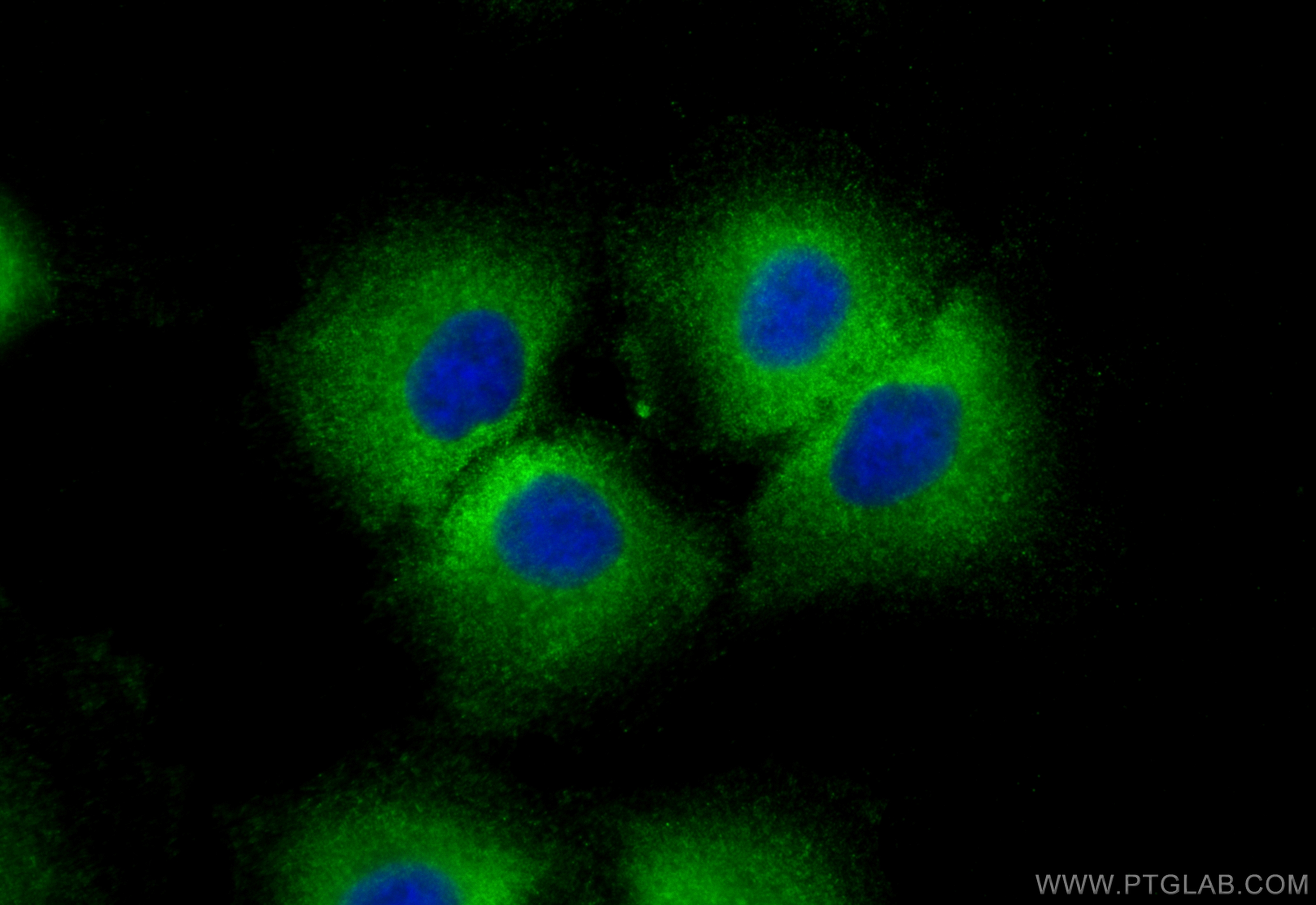Tested Applications
| Positive IF/ICC detected in | A549 cells |
| Positive FC (Intra) detected in | HeLa cells |
Recommended dilution
| Application | Dilution |
|---|---|
| Immunofluorescence (IF)/ICC | IF/ICC : 1:50-1:500 |
| Flow Cytometry (FC) (INTRA) | FC (INTRA) : 0.25 ug per 10^6 cells in a 100 µl suspension |
| It is recommended that this reagent should be titrated in each testing system to obtain optimal results. | |
| Sample-dependent, Check data in validation data gallery. | |
Product Information
CL488-84298 targets POTEA-Specific in IF/ICC, FC (Intra) applications and shows reactivity with human samples.
| Tested Reactivity | human |
| Host / Isotype | Rabbit / IgG |
| Class | Recombinant |
| Type | Antibody |
| Immunogen | Peptide Predict reactive species |
| Full Name | POTE ankyrin domain family, member A |
| Calculated Molecular Weight | 56 kDa |
| GenBank Accession Number | NM_001002920 |
| Gene Symbol | POTEA |
| Gene ID (NCBI) | 340441 |
| RRID | AB_3673352 |
| Conjugate | CoraLite® Plus 488 Fluorescent Dye |
| Excitation/Emission Maxima Wavelengths | 493 nm / 522 nm |
| Form | Liquid |
| Purification Method | Protein A purification |
| UNIPROT ID | Q6S8J7 |
| Storage Buffer | PBS with 50% Glycerol, 0.05% Proclin300, 0.5% BSA, pH 7.3. |
| Storage Conditions | Store at -20°C. Avoid exposure to light. Stable for one year after shipment. Aliquoting is unnecessary for -20oC storage. |
Background Information
POTEA, also named A26A1 and POTE8, belongs to the POTE family. POTE has an important signaling function in the reproductive system.
Protocols
| Product Specific Protocols | |
|---|---|
| IF protocol for CL Plus 488 POTEA-Specific antibody CL488-84298 | Download protocol |
| Standard Protocols | |
|---|---|
| Click here to view our Standard Protocols |





